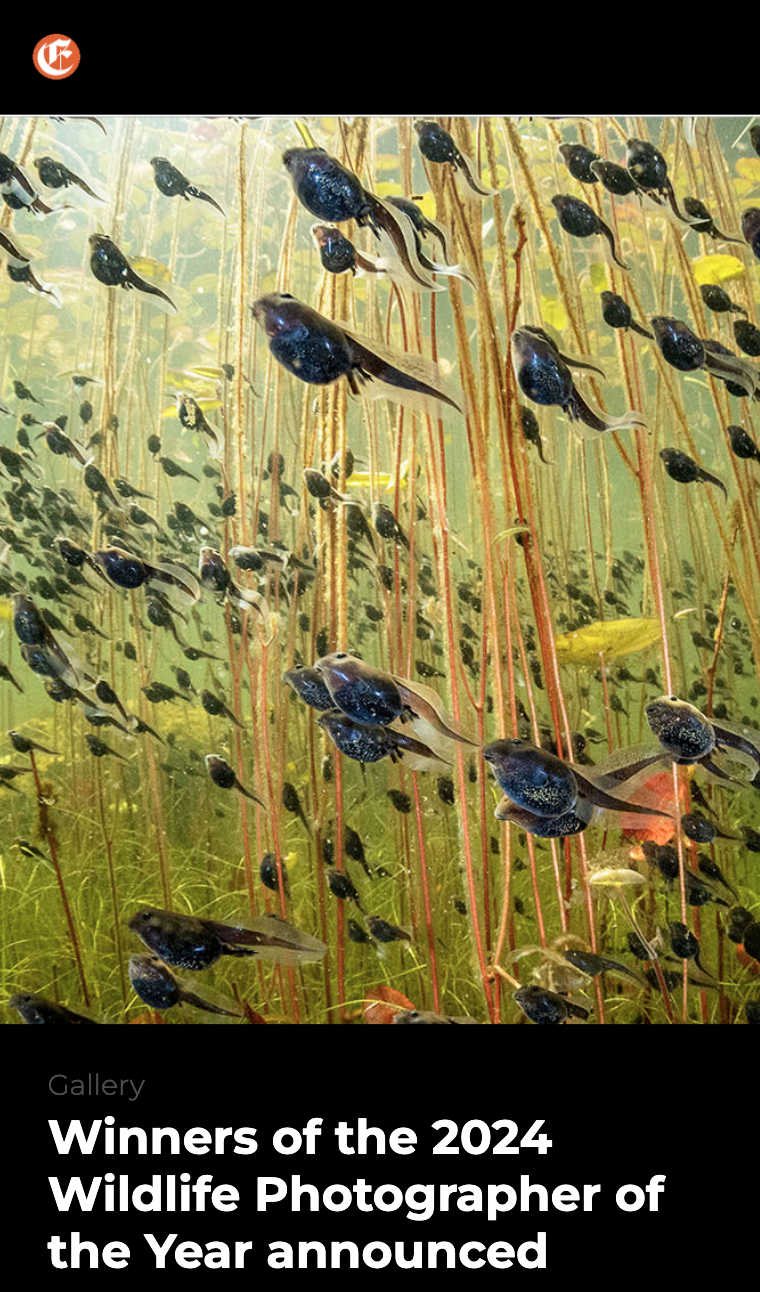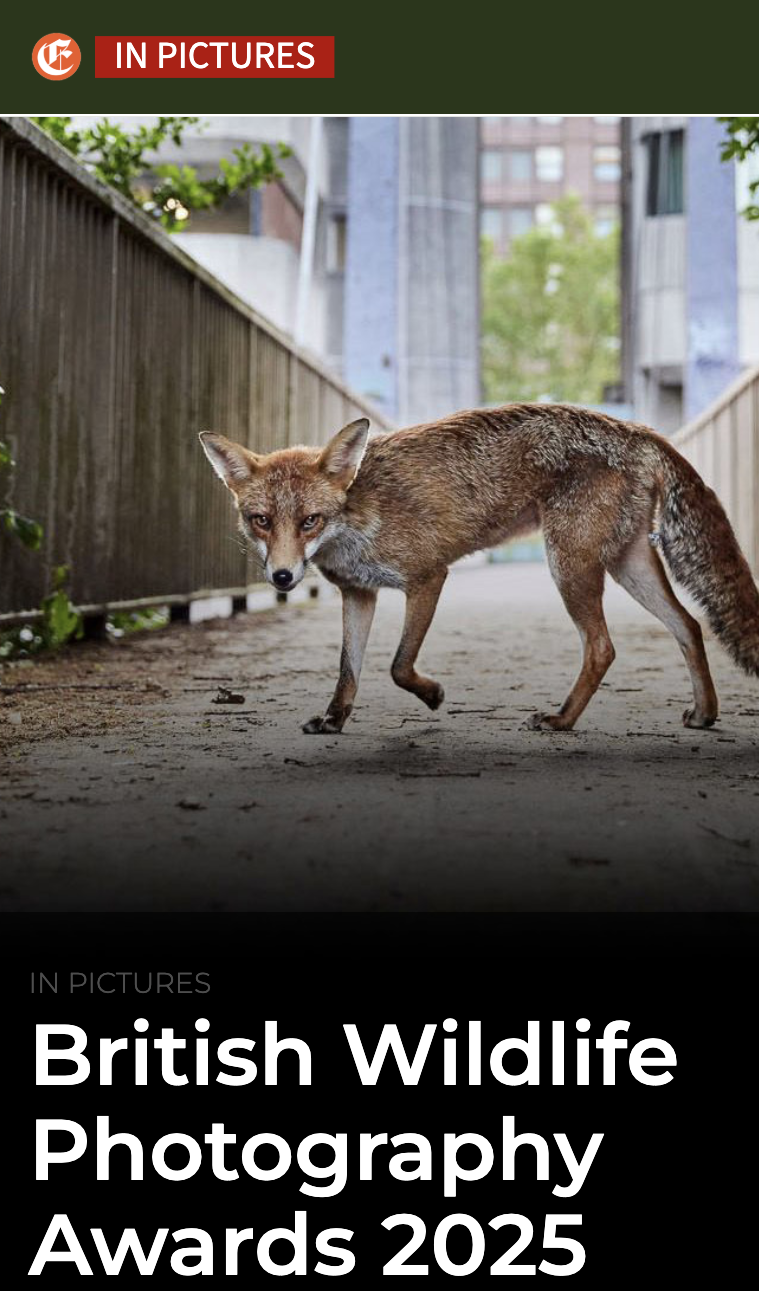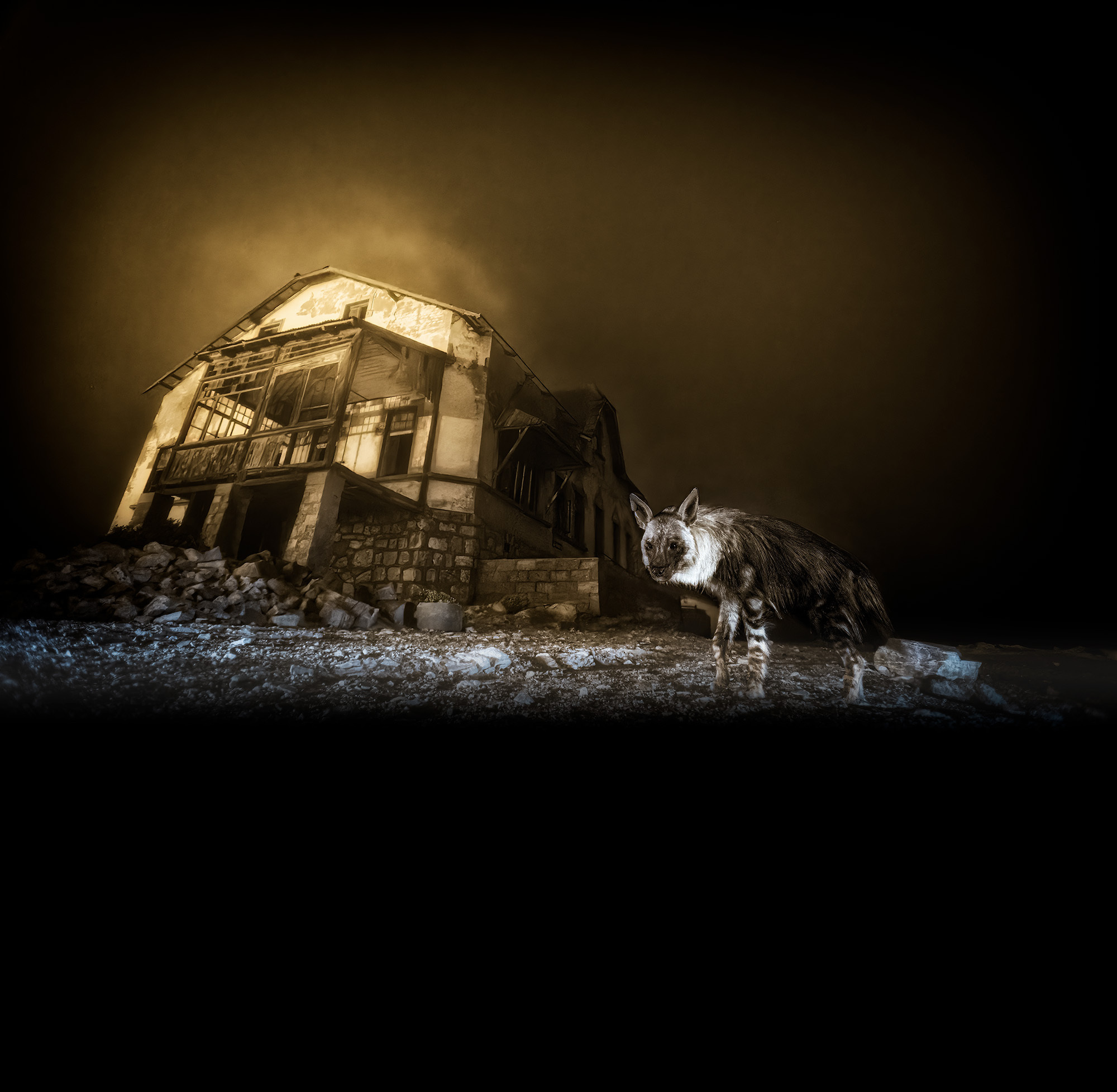
10 Years and Under
The Weaver's Lair
Jamie first noticed the dew-laden web before realising its maker was sitting in a nest. With the patience and steadiness needed to manually focus her camera, she kept the spider perfectly lit and symmetrically framed.
This spider’s web is constructed from a scaffold of radial threads, overlaid with a spiral of sticky silk to hold ensnared insects. A strong signal thread transmits vibrations to the spider’s hiding place, triggering it to emerge and collect its prey.
Picture: Jamie Smart / Wildlife Photographer of the Year
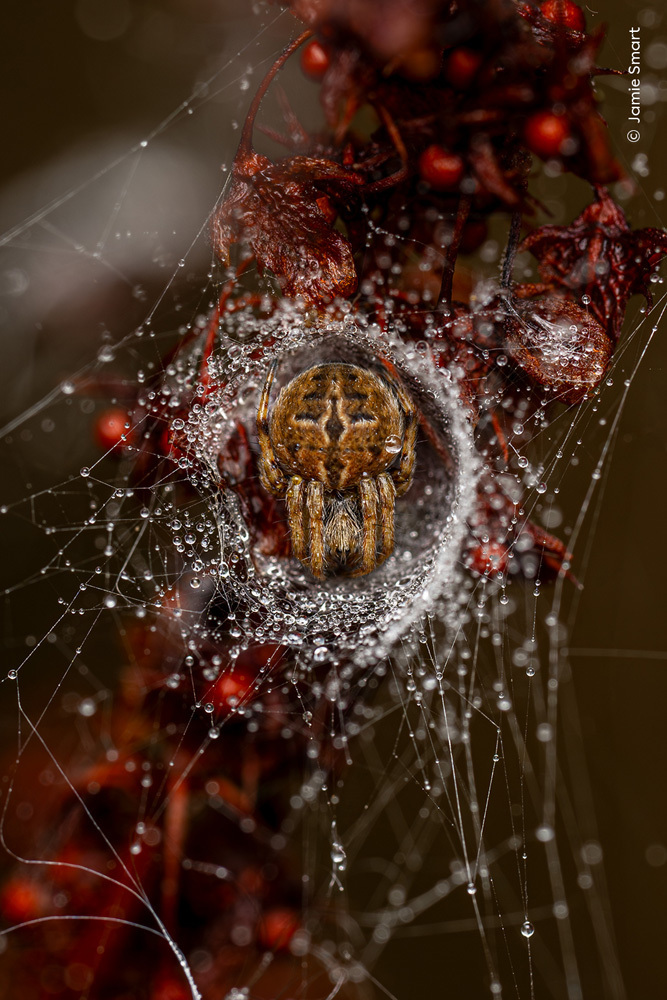
11 – 14 Years
Alpine Dawn
Lubin spotted the Alpine ibex resting above a sea of clouds during an early morning ascent. As the mist rose and the sun broke over the crags, he retraced his steps to capture this ethereal moment before fog thickened and the light faded.
Native to Europe, the species was hunted close to extinction in the early 1800s. Thanks to protection and reintroduction efforts, ibex now roam large areas of the Alps. However, a rapidly changing climate causing shifts in food availability during breeding seasons may hinder their survival.
Picture: Lubin Godin / Wildlife Photographer of the Year
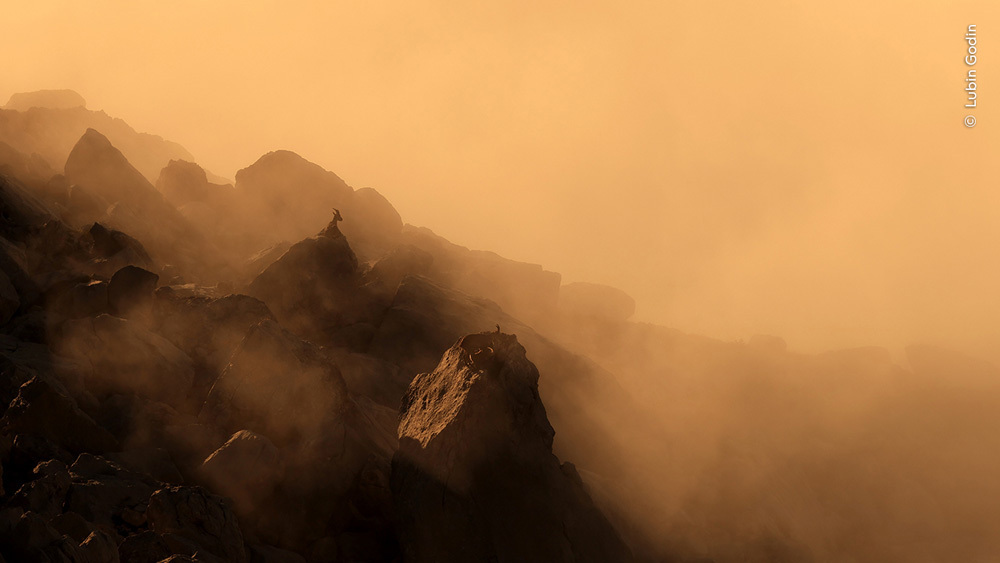
Young Wildlife Photographer of the Year 2025,
15 – 17 Years
After the Destruction
Andrea noticed this longhorn beetle while walking in the Lepini Mountains of central Italy, in an area once logged for old beech trees. Using a wide-angle lens and off-camera flash, he framed the beetle against abandoned machinery.
Andrea’s photograph tells a poignant story of habitat loss. As longhorn beetles tunnel into dead wood, fungi make their way inside, helping to break it down and recycle nutrients. If the beetles’ habitat is disturbed or destroyed, the effects ripple across the entire ecosystem.
Picture: Andrea Dominizi / Wildlife Photographer of the Year
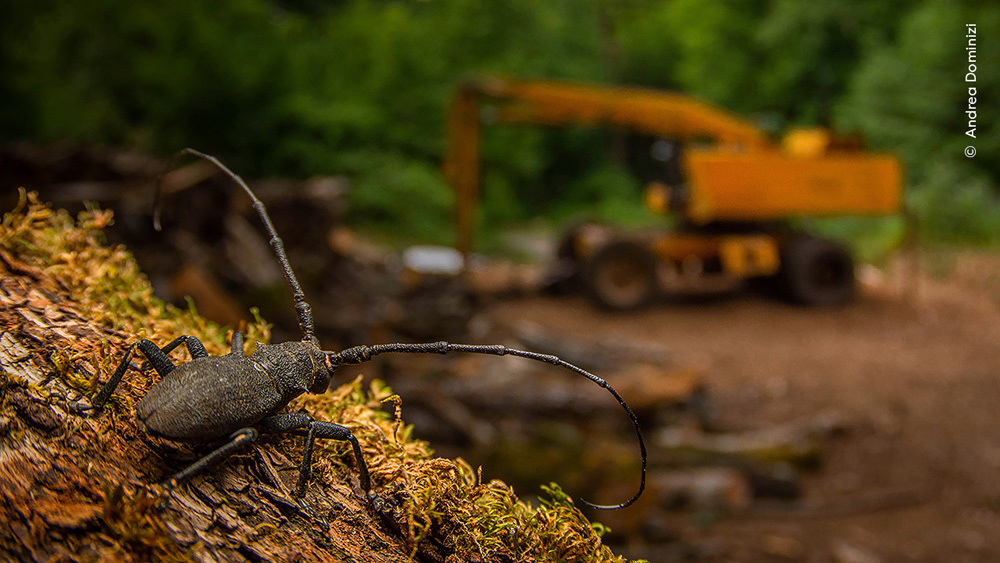
Animals in their Environment
Like an Eel out of Water
It took Shane numerous attempts over several weeks to document this rarely photographed behaviour. At first the eels were elusive, but once Shane realised that they were scavenging for dead fish, he waited. His patience was soon rewarded when these three eels appeared.
Peppered moray eels are well adapted to the intertidal zone. They can hunt both above and below the water’s surface using their keen senses of smell and sight, sometimes staying out of water for more than 30 seconds.
Picture: Shane Gross / Wildlife Photographer of the Year
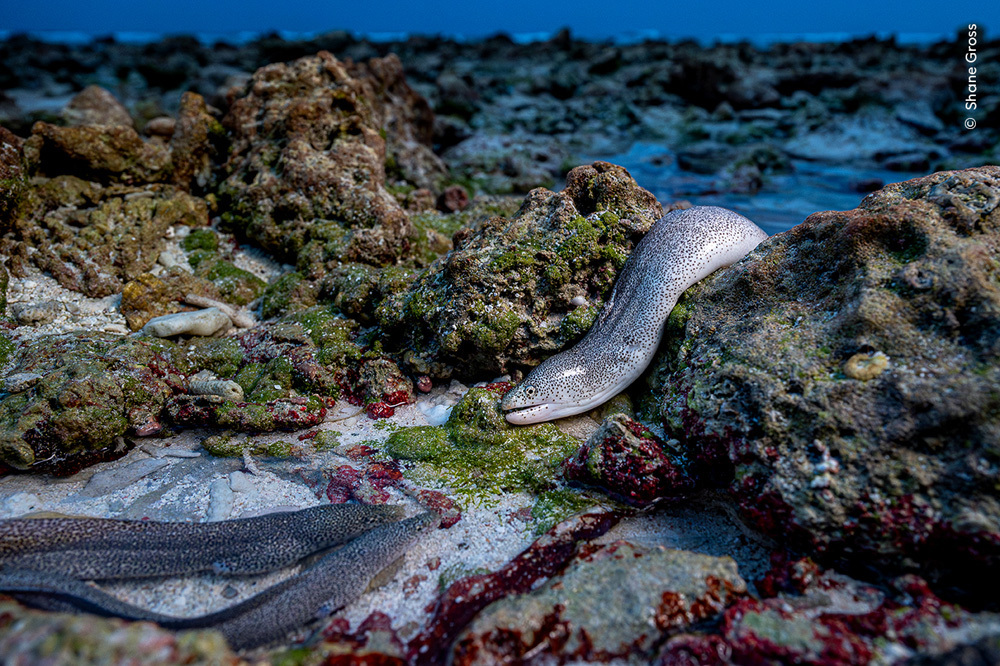
Animal Portraits
Shadow Hunter
Philipp first saw this nest while climbing and spent four years observing it from a distance. He planned this image meticulously, right down to the slight camera wobble to blur the few elements present, using a telephoto lens.
About twice the weight of a buzzard and with a wingspan approaching 180 centimetres (6 feet), these formidable nocturnal predators are among the largest owls. They nest on sheltered cliff ledges or in crevices, often returning to the same site for years.
Picture: Philipp Egger’s / Wildlife Photographer of the Year
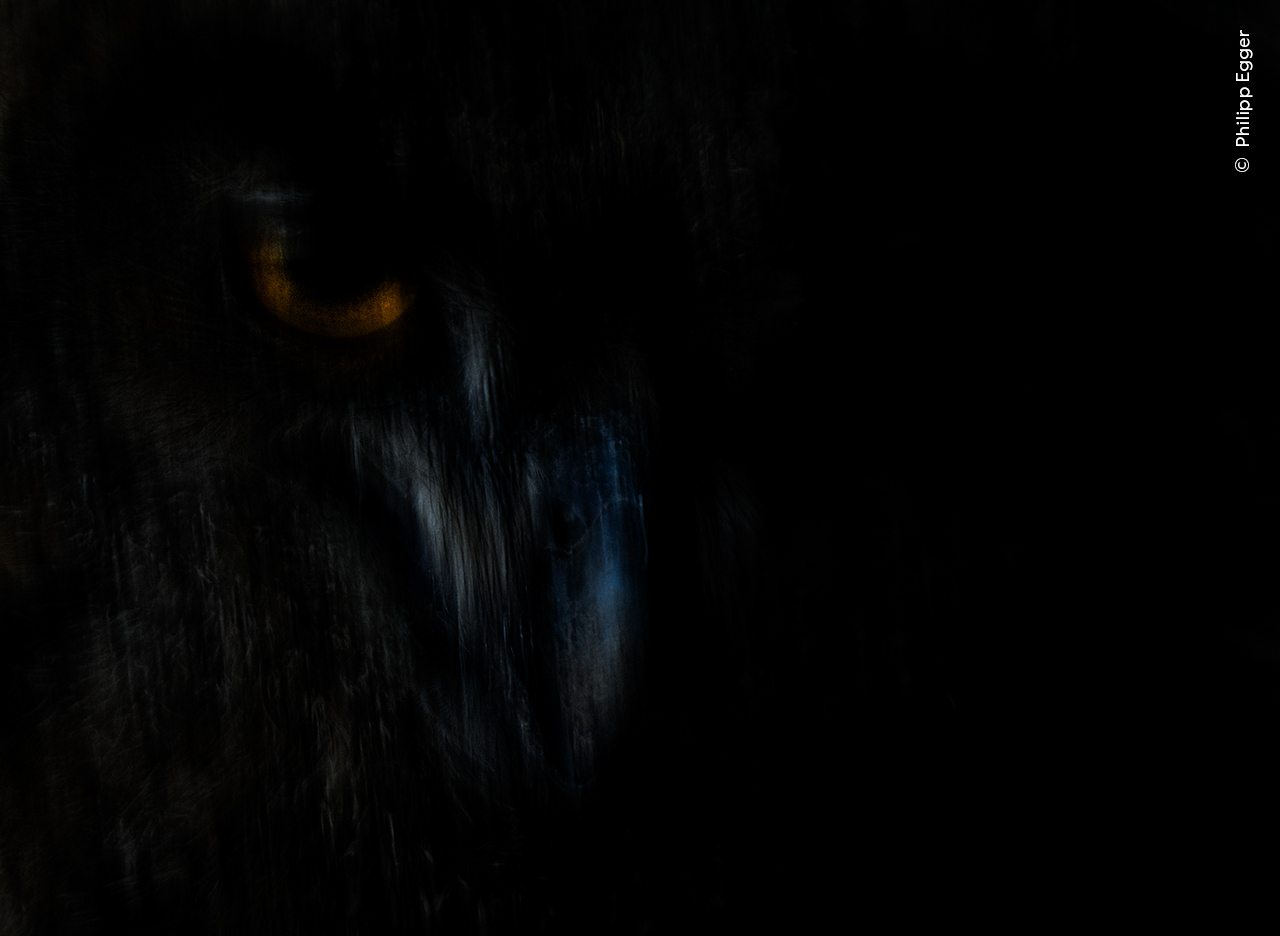
Behaviour: Birds
Synchronised Fishing
Qingrong was at Yundang Lake near his home, a place he visits regularly to photograph the feeding frenzies: little egrets patrol the surface, ready to pounce on fish leaping to escape underwater predators.
Once a natural marine harbour, Yundang Lake was sealed off from the sea during 1970s development. Isolated from the tides and currents, it became polluted and stagnant. An engineering project later reconnected it to the sea via a system of gates that regulate water flow.
Picture: Qingrong Yang / Wildlife Photographer of the Year
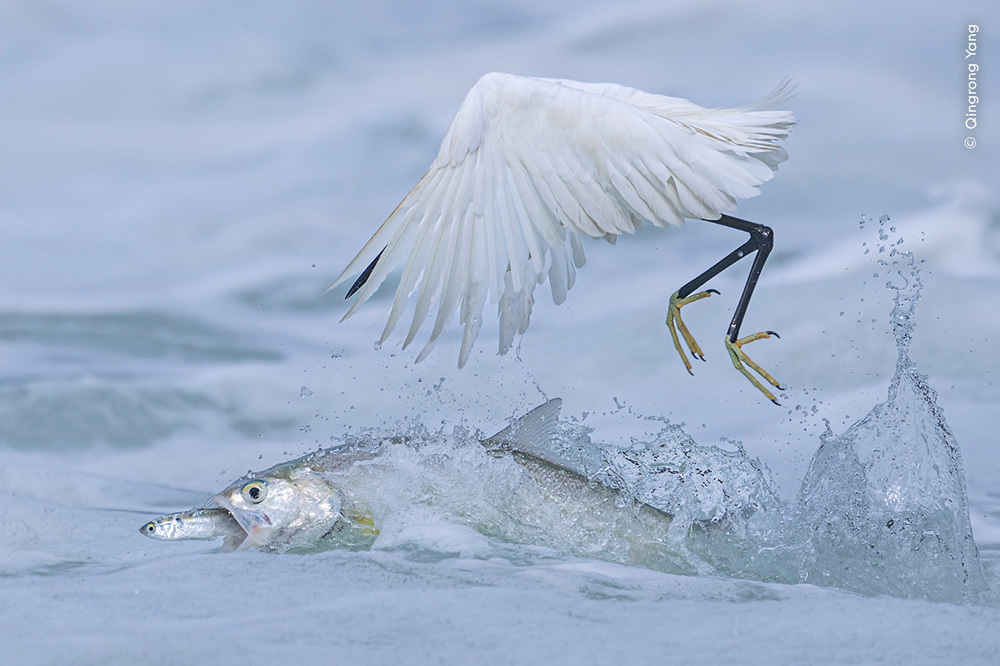
Behaviour: Mammals
Cat Amongst the Flamingos
Dennis had been keeping an eye out for wild cats such as servals for several days when a call came over the radio: one had been seen at Ndutu Lake. But it wasn’t a serval. It was a caracal, successfully hunting wading lesser flamingos.
Caracals have a varied diet, from insects to antelope, and are renowned for the acrobatic leaps they make to snatch birds from the air. But there are few, if any, records of them hunting flamingos.
Picture: Dennis Stogsdill / Wildlife Photographer of the Year
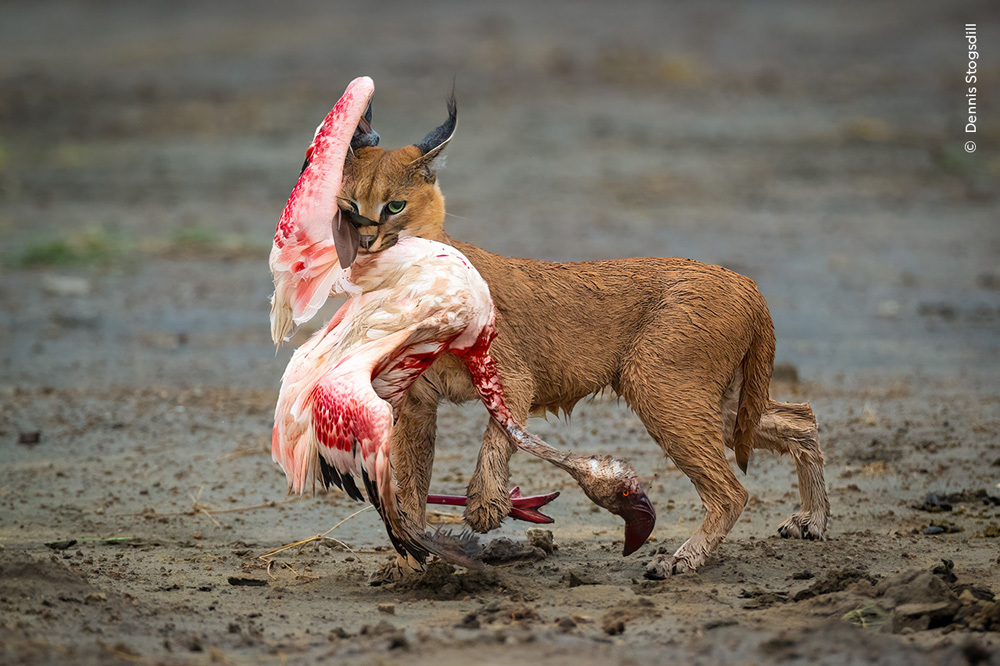
Behaviour: Amphibians and Reptiles
Frolicking Frogs
In persistent rain, Quentin followed a flooded path to a temporary pool in a forest clearing. He framed this scene with a wide-angle lens and used a diffused flash, which didn’t disturb the frogs, to highlight their metallic sheen.
To attract mates, lesser tree frogs produce short, shrill calls. Huge numbers gather, and the spectacular breeding event – triggered by heavy rains – lasts for just a few hours.
Picture: Quentin Martinez / Wildlife Photographer of the Year
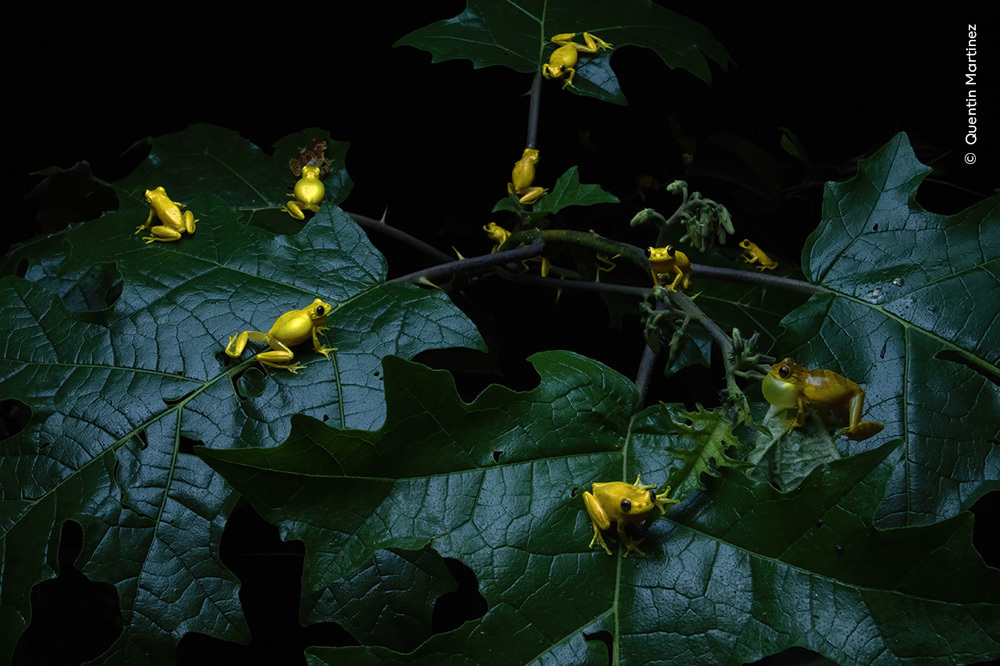
Behaviour: Invertebrates
Mad Hatterpillar
Georgina had been looking out for this caterpillar for years when she noticed eucalyptus trees bearing skeletonised leaves, telltale signs that the animal had been grazing. She took this image backlit by the setting sun, using a fill-in flash to illuminate the living head at the base of the stack.
This caterpillar’s unusual headgear is made up of old head capsules, each retained with every moult. The resulting tower is believed to help deflect attacks by predators.
Picture: Georgina Steytler / Wildlife Photographer of the Year
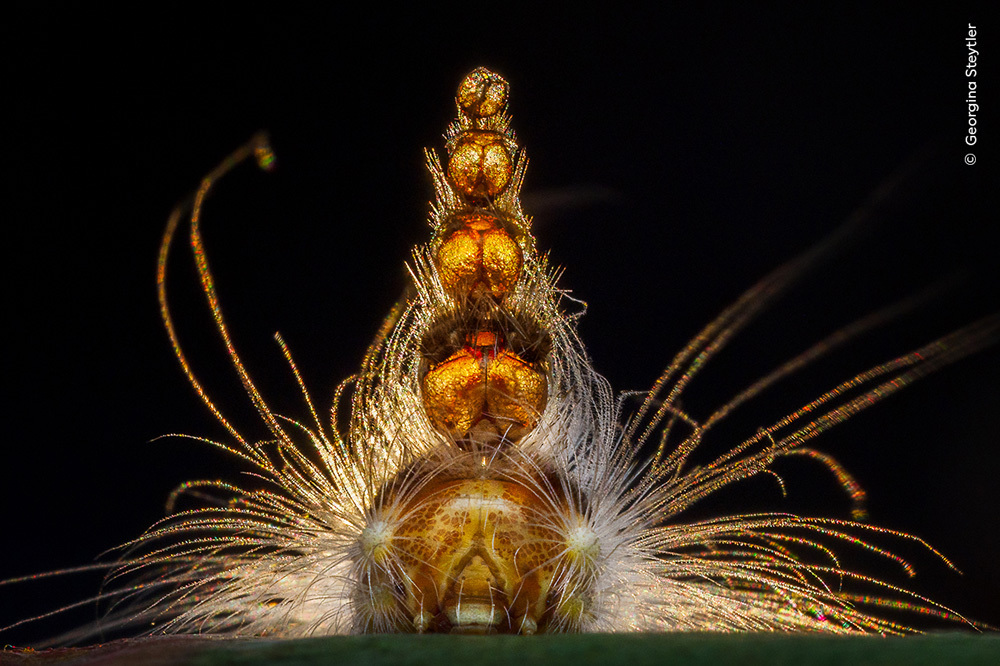
Ocean: The Bigger Picture
The Feast
Audun managed to photograph this chaotic scene of gulls attempting to catch fish trapped by nets. The gulls have learnt to follow the sound of the boats to find a herring feast. Through his work, Audun aims to draw attention to the ongoing conflict between seabirds and the fishing industry.
Unfortunately, many birds drown in or around these purse seine nets each year. Various fisheries and researchers are trialling solutions, including sinking the nets more quickly to make them less accessible to the birds.
Picture: Audun Rikardsen / Wildlife Photographer of the Year
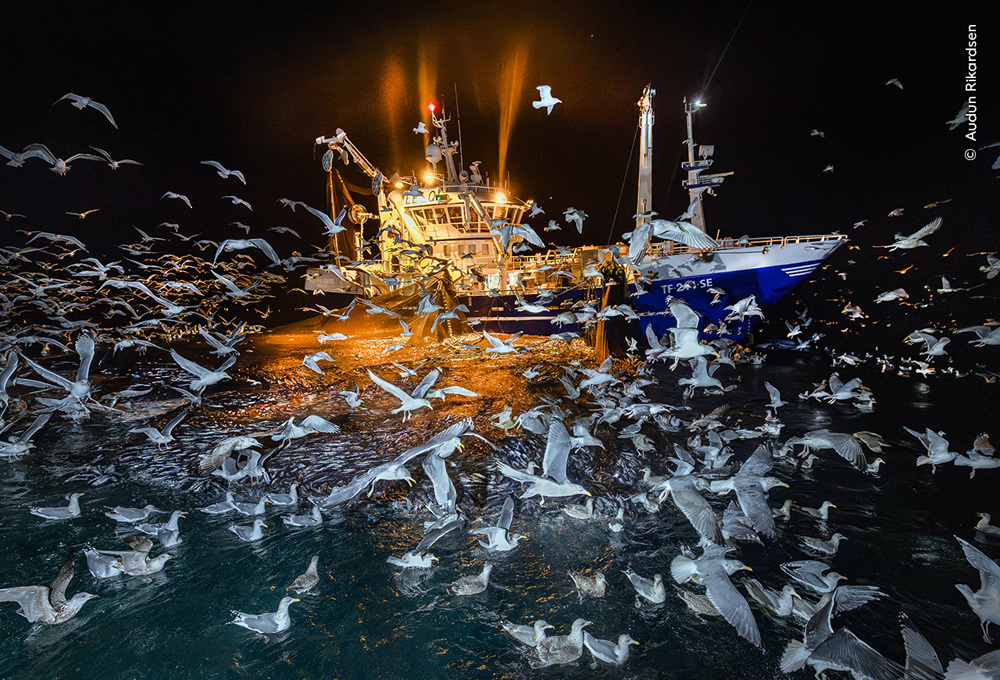
Plants and Fungi
Deadly Allure
Insects can see ultraviolet (UV) light, but humans can’t, so Chien used a long exposure and a UV torch. Waiting until after sunset, he had just a five-minute window before the ambient light illuminating the backdrop disappeared completely.
Some carnivorous pitcher plants reflect UV light on certain areas as part of their ‘display’. They use colour, scent and nectar to lure their prey into pools of digestive juices at the bottom of their leaves.
Picture: Chien Lee / Wildlife Photographer of the Year
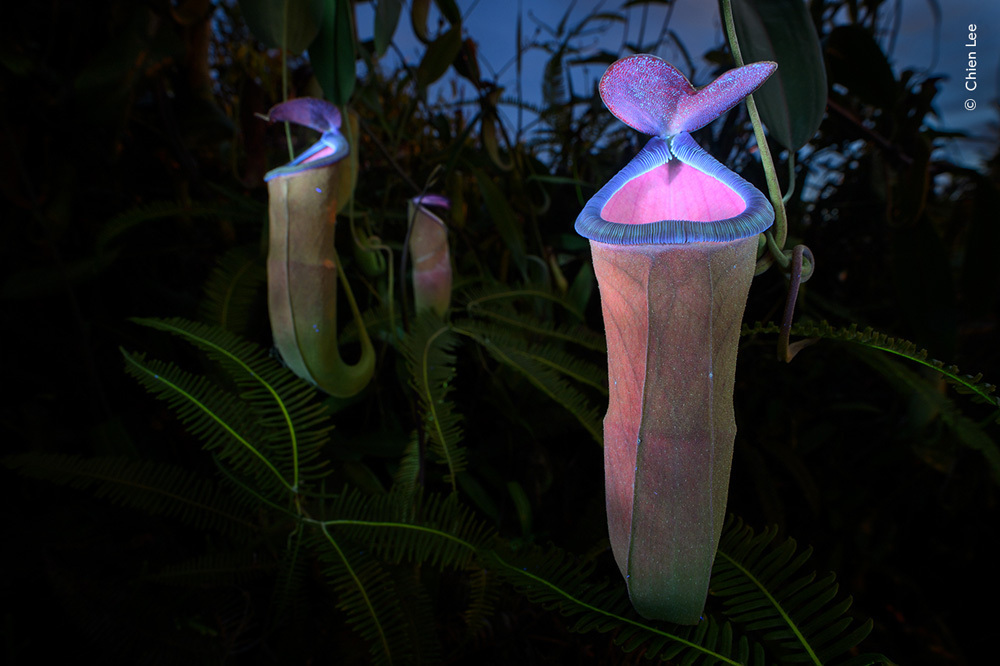
Natural Artistry
Caught in the Headlights
To achieve this kaleidoscopic effect, Simone reversed one of the six glass elements in an analogue lens. This distorted the image at the edges while leaving the centre sharply focused. She then cropped the picture to move the spider slightly off-centre.
In urban environments, orb weaver spiders often spin webs near artificial lights that attract insects at night. The web acts as an extension of their sense organ, gathering sound and transmitting vibrations, including those of prey, to their legs.
Picture: Simone Baumeister / Wildlife Photographer of the Year
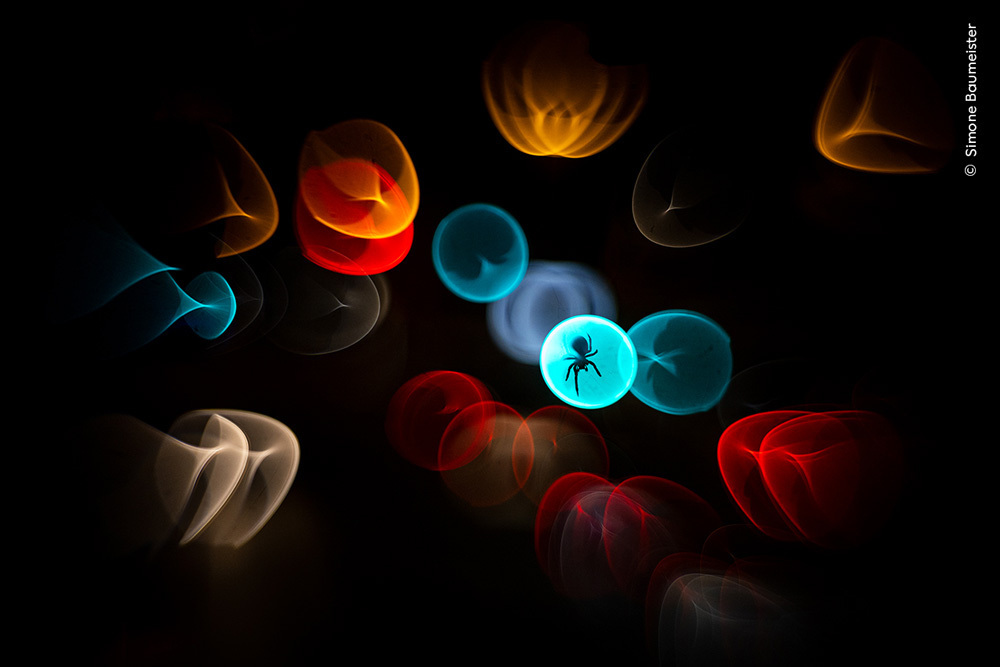
Underwater
Survival Purse
Faced with strong currents pushing him from side to side, Ralph struggled to keep steady to photograph this egg case, or ‘mermaid’s purse’. He lit the case from behind to reveal the swell shark embryo within, its gill slits and yolk sac clearly visible among the dark kelp forest.
Researchers estimate that kelp forests in Monterey Bay have declined by more than 95 per cent over the past 34 years. Swell sharks depend on kelp to lay their leathery eggs, making them especially vulnerable to such losses.
Picture: Ralph Pace / Wildlife Photographer of the Year
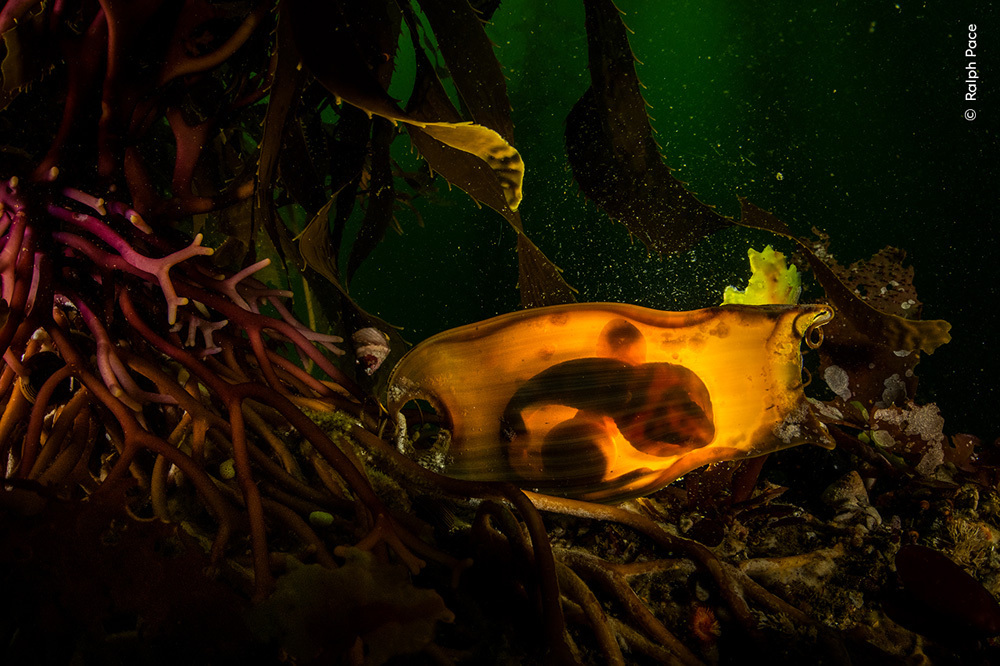
Wildlife Photographer of the Year 2025,
Urban Wildlife
Ghost Town Visitor
With sea fog rolling in from the Atlantic Ocean, Wim chose this spot for his camera trap after noticing hyena tracks nearby. ‘It took me 10 years to finally get this one single image of a brown hyena, in the most perfect frame imaginable.’
The rarest hyena species in the world, brown hyenas are nocturnal and mostly solitary. They are known to pass through Kolmanskop on their way to hunt Cape fur seal pups or scavenge for carrion washed ashore along the Namib Desert coast.
Picture: Wim van den Heever / Wildlife Photographer of the Year
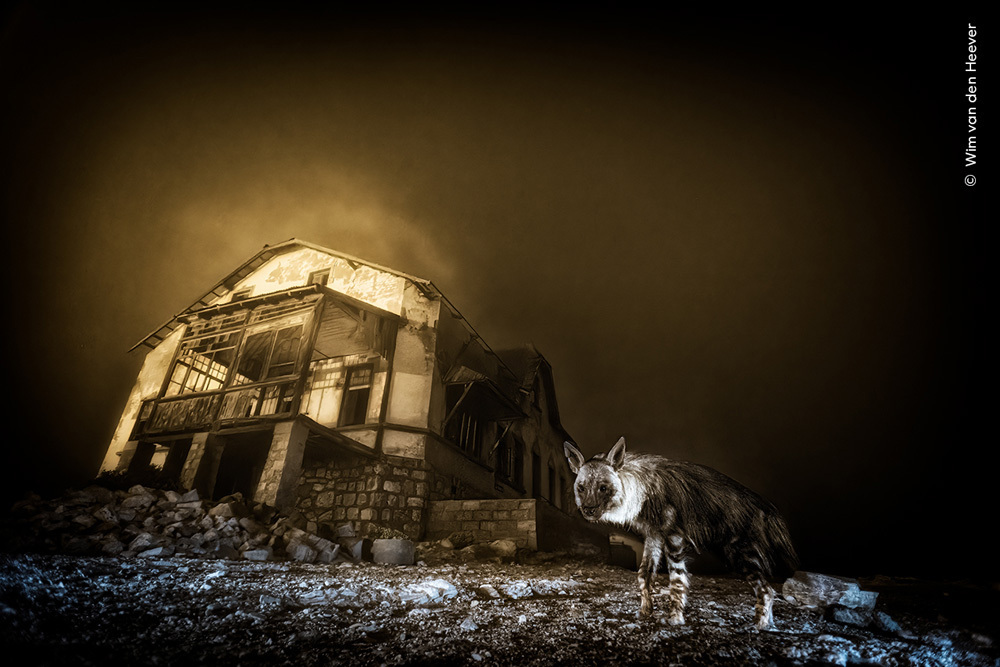
Wetlands: The Bigger Picture
Vanishing Pond
Sebastian visited this fragile wetland ecosystem to highlight its importance as a vast store of carbon dioxide and as a habitat for diverse wildlife. A tiny springtail ran across escaping gas bubbles rising through the algae, giving this image a sense of scale.
Austria has lost 90 per cent of its peat bogs, and only 10 per cent of those that remain are in good condition. Platzertal is one of the last intact high moorlands in the Austrian Alps, and an area renowned for its carbon-storing peat bogs.
Picture: Sebastian Frölich / Wildlife Photographer of the Year
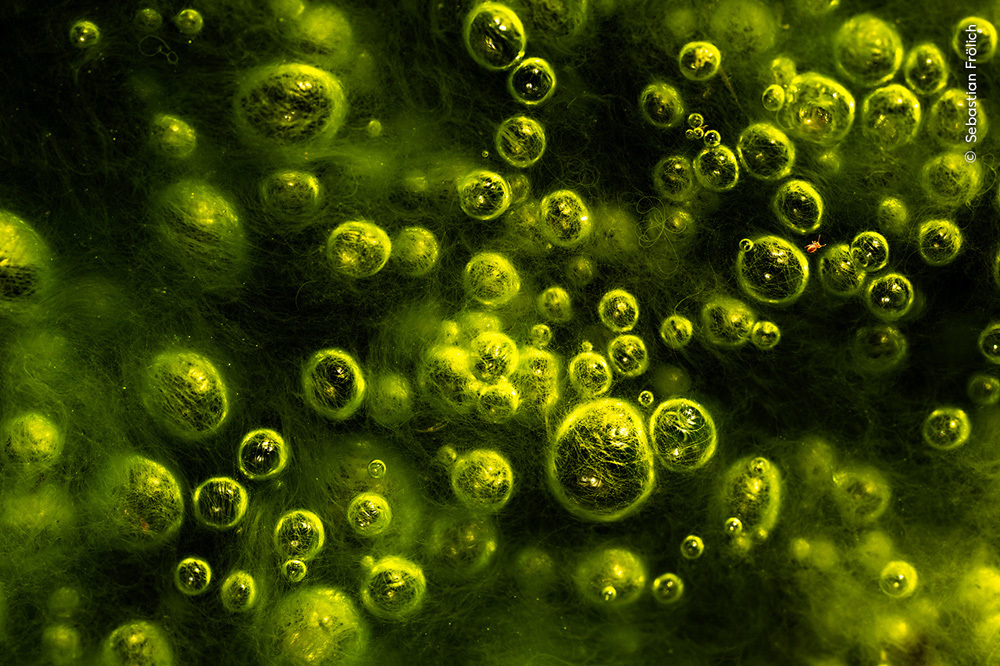
Photojournalism Award
How to Save a Species
Jon spent years documenting the work of the BioRescue Project, and says that witnessing a milestone in saving a species ‘was something I will never forget’.
This southern white rhino foetus, which did not survive due to an infection, was the result of the first successful rhino embryo transfer into a surrogate mother through IVF. This breakthrough paves the way for saving the rare northern white rhino from extinction, as scientists can take the next crucial steps towards transferring the first northern white rhino embryo into a southern white rhino surrogate.
Picture: Jon A Juárez / Wildlife Photographer of the Year
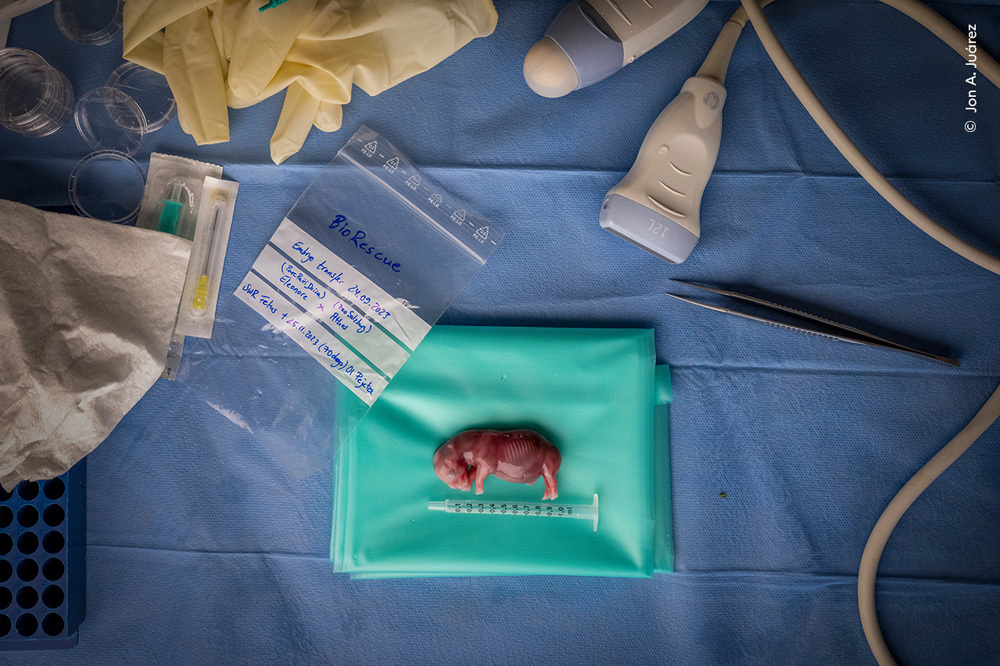
Impact Award
Orphan of the Road
Fernando wanted to highlight the consequences of road collisions, a leading cause of the decline in giant anteater numbers in Brazil. This pup’s mother was killed by a vehicle, and the hope is that it will be released back into the wild after being encouraged to develop crucial survival skills by its caregiver. Alongside rehabilitation centres, the Anteaters and Highways project of the Wild Animal Conservation Institute is developing strategies to reduce anteater deaths on Brazil’s roads. These include erecting fences and building underground tunnels to allow the anteaters to cross safely.
Picture: Fernando Faciole / Wildlife Photographer of the Year
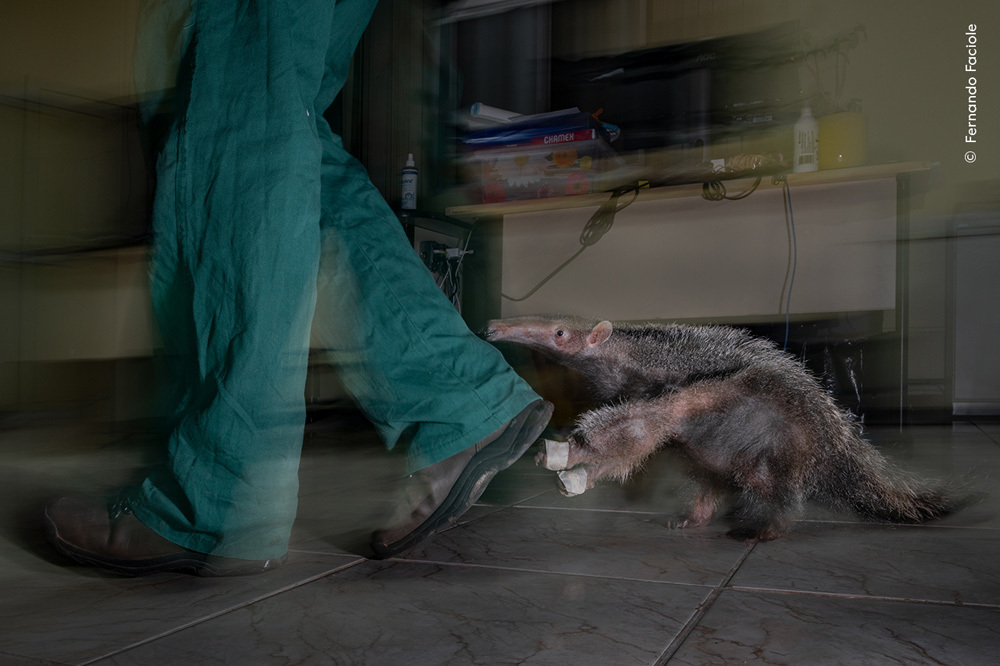
Photojournalist Story Award
End of the Round-up
Seething Pit
For centuries, rattlesnakes have been viewed in vastly different ways across the American continent – from reverence and respect to fear and suspicion. Annual rattlesnake round-ups, where hunters compete to collect the highest weight of snakes, began in the 1930s. Today, these competitions are losing their appeal, but in some states, anti-rattlesnake sentiment remains strong.
In this portfolio, Javier calls for respect and protection for these creatures before they disappear from the American landscape.
Visitors gaze at hundreds of western diamondback rattlesnakes at the annual rattlesnake round-up in Sweetwater, Texas. Many of these snakes will be killed and sold for their skin and meat. Round-ups can harm other animals too: snakes are often driven from their rock shelters using petrol fumes, which also affect any creatures sheltering alongside them.
Picture: Javier Aznar González de Rueda / Wildlife Photographer of the Year
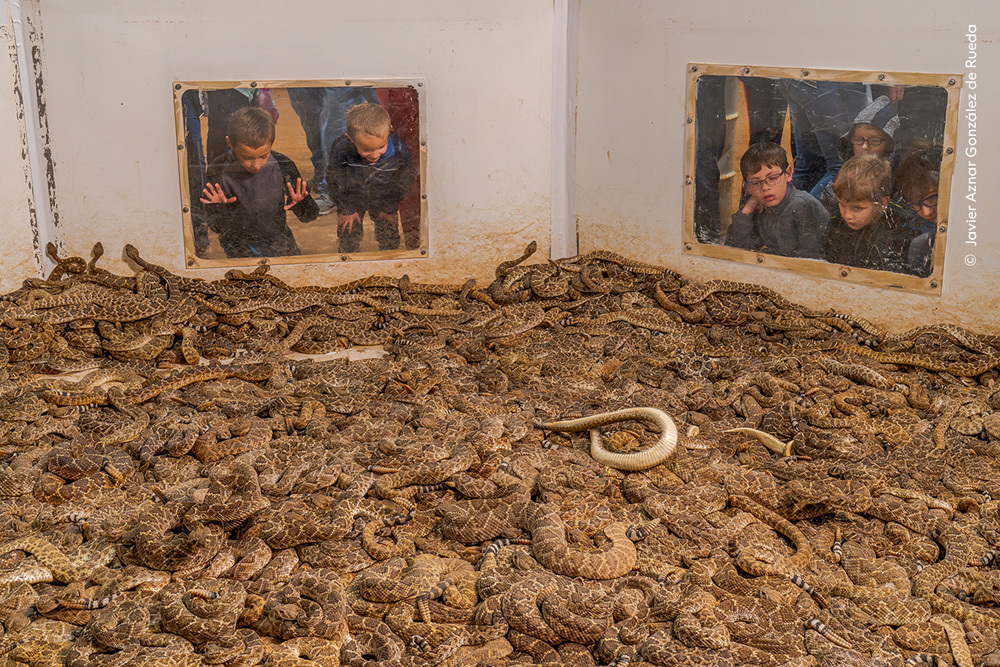
Rising Star Award
Watchful Moments
Meet the Neighbours
Luca’s childhood ambition was to learn everything he could about birds. He spent long hours in the parks around his home on the outskirts of Berlin, observing them. He bought his first camera when he was 13, and photography became a passion.
Through photography, Luca is able to spend time in nature and highlight its beauty. His portfolio aims to show people his personal view of nature and inspire others to protect it.
Luca was photographing mute swans on an urban lake one evening when a coypu, a rodent introduced from South America, appeared in the frame. Having been shipped across the world for the fur trade, coypu have since established many feral populations.
Picture: Luca Lorenz / Wildlife Photographer of the Year
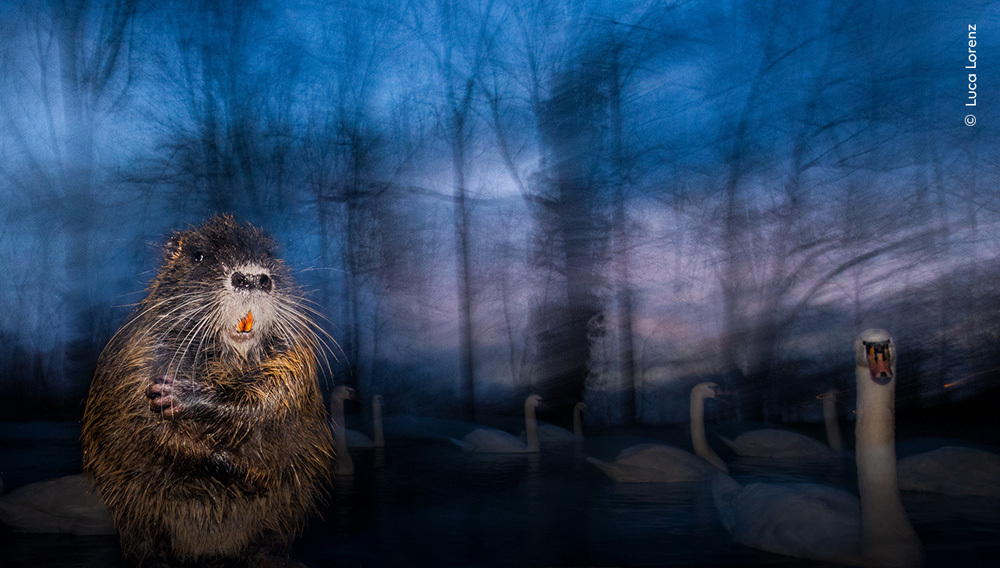
Portfolio Award
Visions of the North
Taiga Moon
Alexey is a self-taught photographer with a passion for landscape photography. His artistic exploration of remote regions in the Russian North, Siberia and Asia highlights taiga and Arctic tundra scenes as summer rapidly turns to winter.
Using drones, he picks out details in these vast terrains, showcasing their wild beauty through striking compositions. Yet beyond this visual feast lie human-made threats – not least a pressing vulnerability to climate change.
Alexey launched his drone from a narrow strip of land between a mosaic of small lakes. He framed his picture around a dry, grassy mound encircled by ice, reflected pine silhouettes, and the autumn glow of sphagnum moss.
Picture: Alexey Kharitonov / Wildlife Photographer of the Year
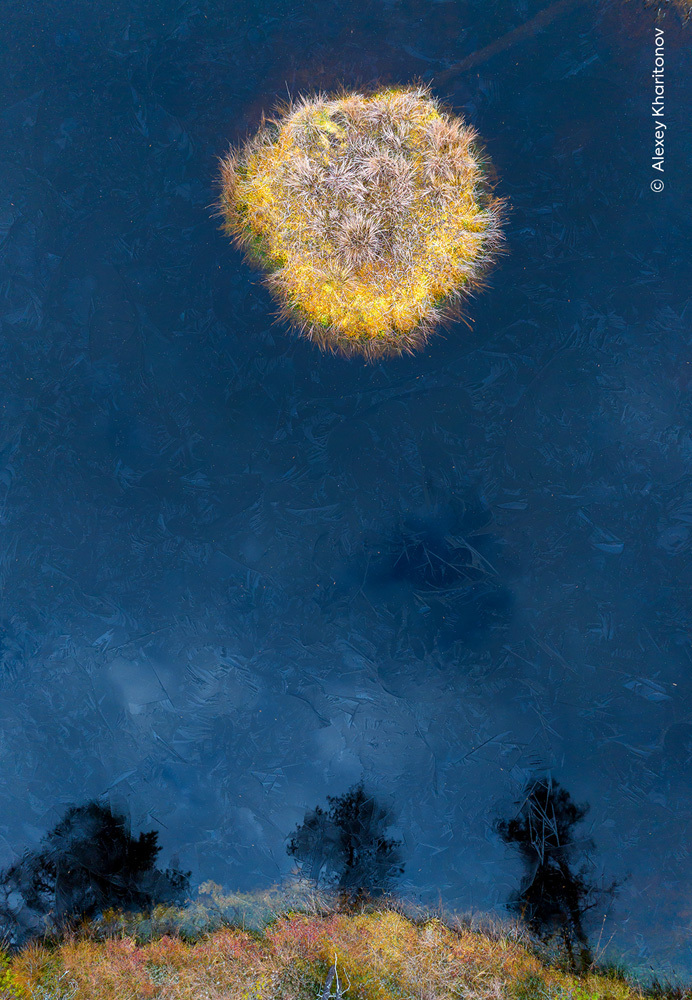
Wildlife Photographer of the Year is developed and produced by the Natural History Museum, London
Find out more about the exhibition here

Irish Examiner Longread
Copyright Irish Examiner.
Design Jim Coughlan/ Ivan Rodriguez

